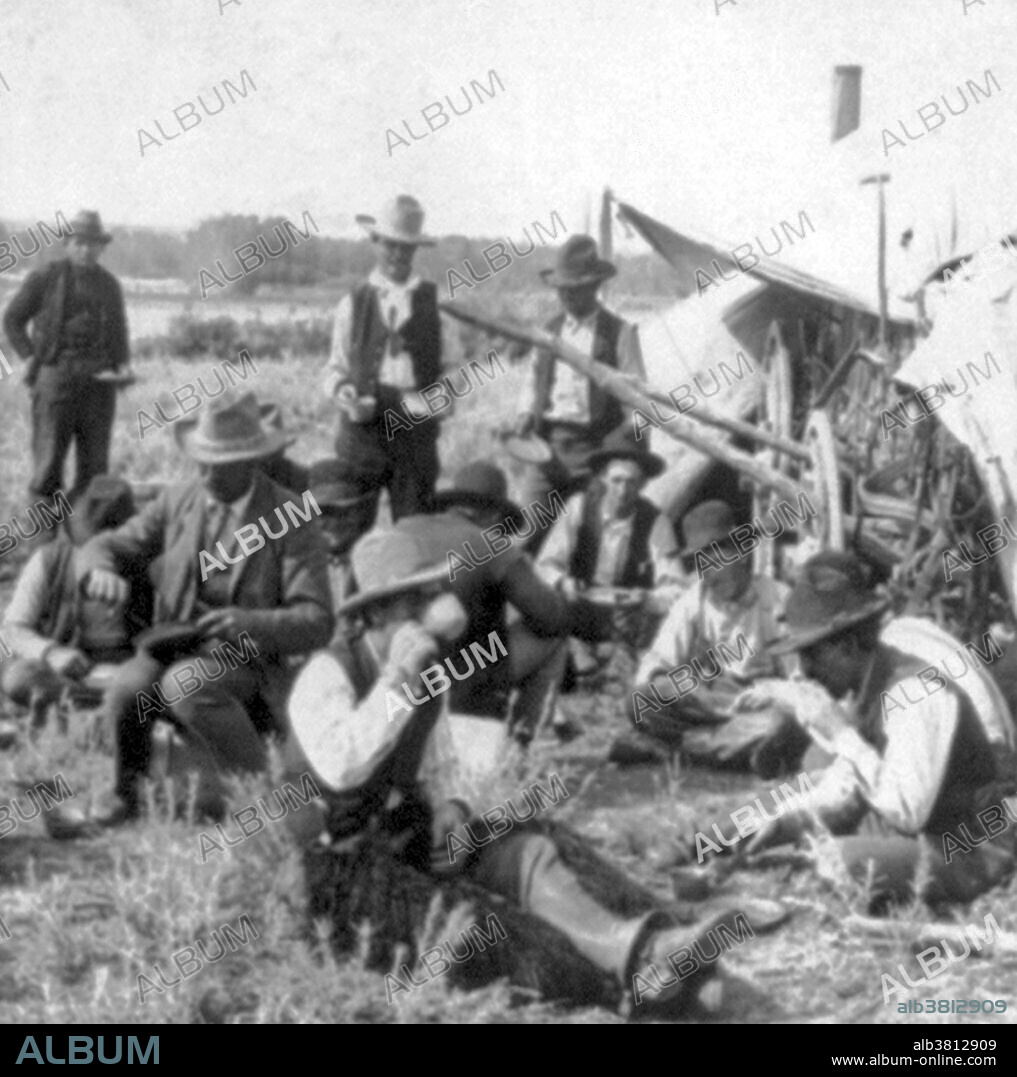alb3812909
Chuckwagon and Cowboys, 1905

|
Añadir a otro lightbox |
|
Añadir a otro lightbox |



¿Ya tienes cuenta? Iniciar sesión
¿No tienes cuenta? Regístrate
Compra esta imagen

Título:
Chuckwagon and Cowboys, 1905
Descripción:
Ver traducción automática
The chuckwagon is attributed to Charles Goodnight, a Texas rancher, who introduced the concept in 1866. Cattlemen herded cattle in parts of the country that did not have railroads which meant they needed to be fed on the road for months at a time. Goodnight modified the Studebaker wagon, a durable army-surplus wagon, added a "chuck box" to the back of the wagon with drawers and shelves for storage space and a hinged lid to provide a flat cooking surface. A water barrel was also attached to the wagon and canvas was hung underneath to carry firewood. A wagon box was used to store cooking supplies and cowboys' personal items. Chuckwagon food typically included easy-to-preserve items like beans and salted meats, coffee, and sourdough biscuits. Food would also be gathered en route. There was no fresh fruit, vegetables, or eggs available and meat was not fresh unless an animal was injured during the run and therefore had to be killed. The meat they ate was greasy cloth-wrapped bacon, salt pork, and beef, usually dried, salted or smoked. The wagon was also stocked with a water barrel and a sling to kindle wood to heat and cook food. Photographed by Keystone View Company, 1905.
Crédito:
Album / LOC/Science Source
Autorizaciones:
Modelo: No - Propiedad: No
¿Preguntas relacionadas con los derechos?
¿Preguntas relacionadas con los derechos?
Tamaño imagen:
3750 x 3775 px | 40.5 MB
Tamaño impresión:
31.8 x 32.0 cm | 12.5 x 12.6 in (300 dpi)
Palabras clave:
1905 • 90S • ACAMPADA • ALMUERZO • AMERICA • AMERICANO • AÑOS NOVENTA • BLANCO Y NEGRO • BRONCO • CAMPING • CENA • COMIENDO • COWBOY • DECADA NOVENTA • DESAYUNO • DESORDEN • ESTADOS UNIDOS DE AMERICA • ESTADOS UNIDOS • ESTEREÓGRAFO • FOTO • FOTOGRAFIA • GRUB • HISTORIA • HISTORICO • HOMBRE • HOMBRES • HORA DE COMER • MASCULINO • OCUPACION • RECORTADO • RETRATO DE HOMBRE • SIGLO XX • VAQUERO
 Pinterest
Pinterest Twitter
Twitter Facebook
Facebook Copiar enlace
Copiar enlace Email
Email
